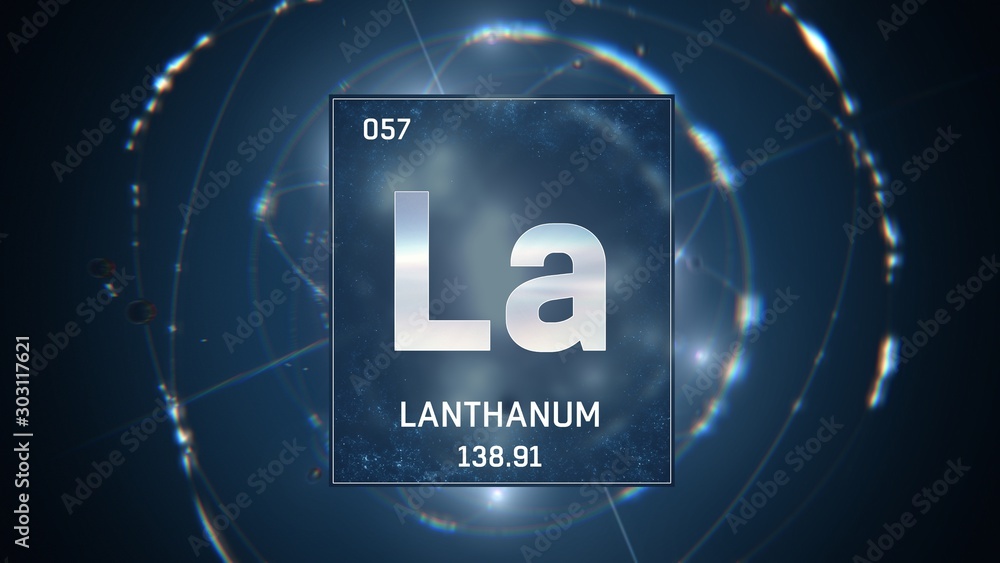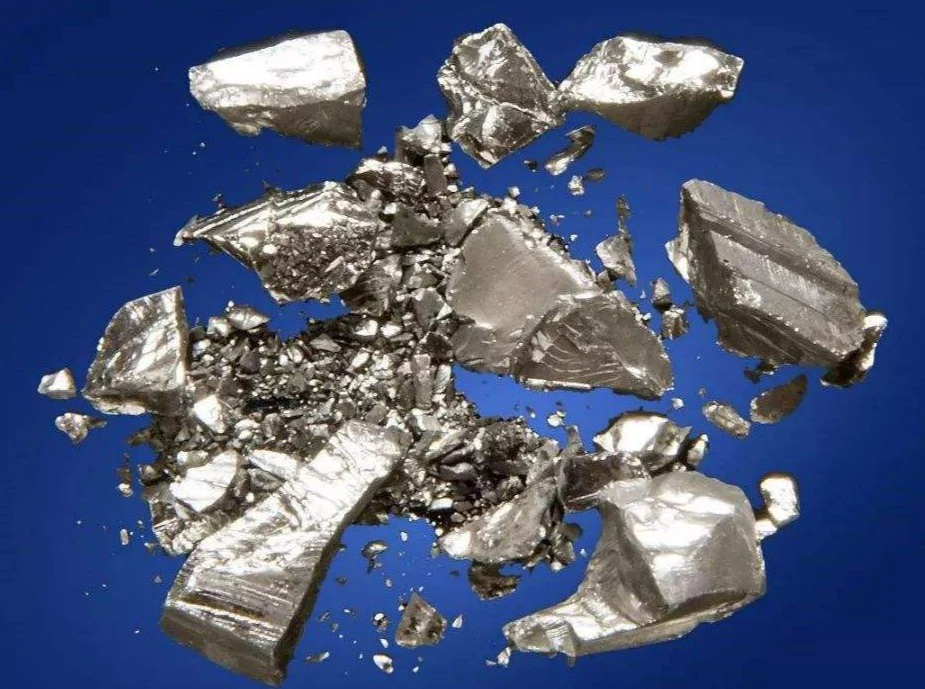Identity.
Lanthanum (La), despite its misleading "rare earth" label, is
surprisingly abundant in our planet's crust. This soft, silvery metal
stands as the first member of the lanthanide series, known for their
similar properties. While it tarnishes easily, lanthanum shines in the
world of technology. Its oxide form strengthens optical glass, its
compounds illuminate screens, and its unique properties enhance
batteries, alloys, and even medical imaging. Though not vital for
humans, lanthanum's versatility ensures its presence in many aspects
of our modern world, from everyday objects to cutting-edge
advancements. This "hidden" element continues to reveal its remarkable
identity in diverse and innovative ways
Atomic Structure:
The nucleus consists of 57 protons (red) and 82 neutrons (blue). 57
electrons (green) bind to the nucleus, successively occupying
available electron shells (rings). Lanthanum is a lanthanide in period
6, and the f-block of the periodic table. It melts at 920 degrees
Celsius.
History.
Cerium's story began in 1803, a double birth shrouded in academic
rivalry. Swedish chemists Berzelius and Hisinger, and German chemist
Klaproth, independently discovered the element almost simultaneously.
They named it after the newly found dwarf planet Ceres, a fitting
tribute to its hidden nature. Though not truly "rare," cerium cleverly
disguised itself within minerals like cerite, fooling earlier
explorers.
Initially, isolating pure cerium proved elusive. For nearly 70
years, scientists wrestled with its reactive tendencies. Finally,
in 1874, electrolysis of molten cerium chloride unveiled the
silver marvel beneath. However, the plot thickened. Cerium
presented with multiple personalities - two oxidation states
causing confusion. It took decades to unravel this mystery,
revealing the unique dance of electrons shaping its identity.
As science delved deeper, lanthanum's versatility came to light.
Its unique properties found applications in diverse fields.
Lanthanum compounds strengthened glass for lenses and optical
fibers, offering clearer views of the world. Rechargeable
batteries gained efficiency with lanthanum's help, powering our
increasingly mobile lives. Even the fight for cleaner energy found
an ally in lanthanum, as it plays a part in capturing hydrogen for
greener fuel sources.
Usage.
Cerium's journey didn't end there. Throughout the 20th century,
scientists unraveled its potential. Its pyrophoric nature found a home
in lighter flints, creating sparks of convenience. Its unique oxide,
ceria, shone brightly in gas mantles, illuminating homes and streets.
Cerium's story continues to unfold. Today, it strengthens magnets,
polishes glass, and even cleans car emissions, proving its
versatility.
-
Fueling Clean Energy:Lanthanum alloys play a crucial role
im NiMH batteries for hybrid cars, reducing dependence on fossil
fuel. Additionally, it aids in capturing hydrogen, a clean and
sustainable energy source.
-
Llluminnating the World:Lanthanum compounds brighten our
lives in diverse ways. The enhace the efficieny of fluorescent
light, X-ray detectors, and even the high-intensity carbon arc
lamps used in movie studios.
-
Pushing Medical Boundaries: Research explores lanthanum's
potential in medical fields. It shows promise in aiding cancer
treatment and improving bone imaging techniques, offering hope for
better healthcare solutions.
Some of the benefits of using lanthanum are:
-
Lanthanum strengthens and improves the transparency of glass,
making it essential for high-quality lenses in cameras,
telescopes, and even fiber optic cables that power the internet.
-
Lanthanum compounds are key ingredients in fluorescent lights,
X-ray detectors, and even the special high-intensity lamps used in
film studios, illuminating our lives in various ways.
-
Lanthanum alloys are crucial components in nickel-metal hydride
batteries used in hybrid cars, promoting greener transportation.
It also aids in capturing and storing hydrogen, a promising clean
energy source.
-
Beyond technology, lanthanum is being explored for its potential
in medicine. Early research suggests its use in aiding cancer
treatment and improving bone imaging techniques, offering hope for
advancements in healthcare.
Sources.
lanthanum isn't found neatly packaged and ready to go. It hides within
a group of minerals called rare-earth elements (REEs). The main
sources are monazite and bastnasite, containing up to 25% and 38%
lanthanum respectively. These minerals are scattered across the globe,
with major deposits in China, the United States, Australia, and
Vietnam. Extracting lanthanum involves a multi-step process,
separating it from its fellow REEs through techniques like ion
exchange and solvent extraction. This journey from hidden mineral to
useful element highlights the complex but crucial role lanthanum plays
in our modern world.
Properties.
Shiny & Reactive: A soft slivery-white metal, lanthanum
tarnishes quickly in air and react readily with water. This reactivity
necessitates careful handling and storage away from moisture.
Glass Whisperer: Lanthanum oxide enhances the transparency and
strength of glass, making it deal for high-qulity lenses, optical
fiber, and even specialy glass with unique light-absobing properties.
Hidden Strength: Despite its soft nature, lanthanum alloys
contribute to the strength and durability of other materials. For
example, adding small amounts to stell improves its workability and
resistance to corrosion.


